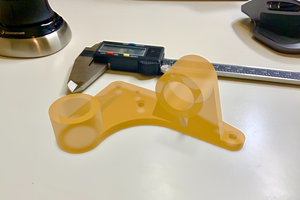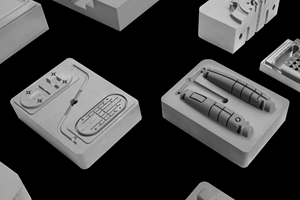Video: AM for Product Development at Pella Corporation
Speed to market is a critical advantage 3D printing can enable. For its new product innovations, Pella iterates quickly using prototypes and tooling produced via AM.
Windows and doors are a competitive business — a new innovation or style improvement can be a commercial win only if the manufacturer can bring it to market faster than a competitor can develop something similar. Window and door maker Pella Corporation experienced this recently with its Steady Set system for simplified window installation, as well as its Hidden Screen system for separating the screen and window glass. In both cases, additive manufacturing was a vital tool for rapid product development. 3D printing made prototype parts, then the initial tooling for short-run production. I learned about the role of AM for product development during a recent visit to the company’s headquarters facility in Pella, Iowa.
Related
- Additive manufacturing is also used to produce rugged hand tools tailored to Pella’s production operations. I saw many 3D printed hand tools in action during a tour of Pella’s factory (video).
- What happens when the effort to advance additive manufacturing succeeds? That is Pella Corporation’s story. AM delivers on several different promises simultaneously for Pella. The challenge now is to manage demand.
Transcipt
I'm at the Pella Corporation in Pella, Iowa. Maker of windows and doors. Pella extensively uses 3D printing for product development to, among other things, develop new ideas in windows.
Here is an example: the Steady Set System. Very different idea for installing windows — install them from the inside rather than the outside, for speed, for safety. The system relies on these special clips that slide right into place to secure the window from the inside. Developing these clips took a lot of engineering iteration, and that was done through 3D printing.
The product development resources here include selective laser sintering and various fused filament fabrication machines. The steady set brackets were developed initially through selective laser sintering. Get the design just right. These components aren't functional, but when the design was there or almost there, it was time to go to the steel version. And initial tooling for bending this steel was also made through 3D printing, fused filament fabrication.
We don't have that die here. But here's another example of product development using a 3D printed tool. This strangely shaped clip is vital for Pella’s Hidden Screen system. The screen disappears into the window frame as the window is raised and lowered. This clip is a molded part. It was initially 3D printed to develop the idea and then again when the idea was close, the mold tooling initially was made through 3D printing. Not a tool that is sufficiently long lasting for full production, but capable of many, many shots while the part is still in development.
Why is product development through 3D printing so important for Pella? A couple of reasons. One, it allows for rapid iteration and lots of iterations. Get the design just right so that a bracket like this works exactly as it should functionally, and in terms of the feel in field operation, but also product development is risky. It's very important to get the product to market before another company can introduce a similar idea. The speed of product development relying on 3D printing helps to mitigate that risk.
Related Content
4 Ways Augmented Reality and 3D Printing Intersect
Augmented reality (AR) is bringing benefits to additive manufacturing, and vice-versa.
Read MoreComplete Speaker Lineup Announced for the 3D Printing Workshop at NPE2024: The Plastics Show
Presentations will cover 3D printing for mold tooling, material innovation, product development, bridge production and full-scale, high-volume additive manufacturing.
Read MoreHow Avid Product Development Creates Efficiencies in High-Mix, Low-Volume Additive Manufacturing
Contract manufacturer Avid Product Development (a Lubrizol company) has developed strategies to streamline part production through 3D printing so its engineering team can focus on development, design, assembly and other services.
Read More3D Printed Tennis Racket Serves a Collaborative Win
The collaboration between All Design Lab and Protolabs led to the creation of a 3D printed tennis racket via direct metal laser sintering, called Hìtëkw. This project not only pushed the limits of additive in terms of design capabilities but revealed how important active communication between customer and manufacturer can be for a project’s success.
Read MoreRead Next
When Advocacy Leads to Adoption: How Pella Applies (and Manages) AM Capacity
The window and door maker offers a picture of successful, widespread 3D printing adoption across the different needs of a manufacturing organization. The outreach and education effort worked. Now, here is the next phase.
Read MoreVideo: 3D Printed Hand Tools in Action on Pella Corporation Factory Tour
Examples include an invention for quickly installing window and door weather stripping, a fitting for giving the proper angle to a nail gun, and a clip for which the color is an important feature.
Read MoreAlquist 3D Looks Toward a Carbon-Sequestering Future with 3D Printed Infrastructure
The Colorado startup aims to reduce the carbon footprint of new buildings, homes and city infrastructure with robotic 3D printing and a specialized geopolymer material.
Read More





















